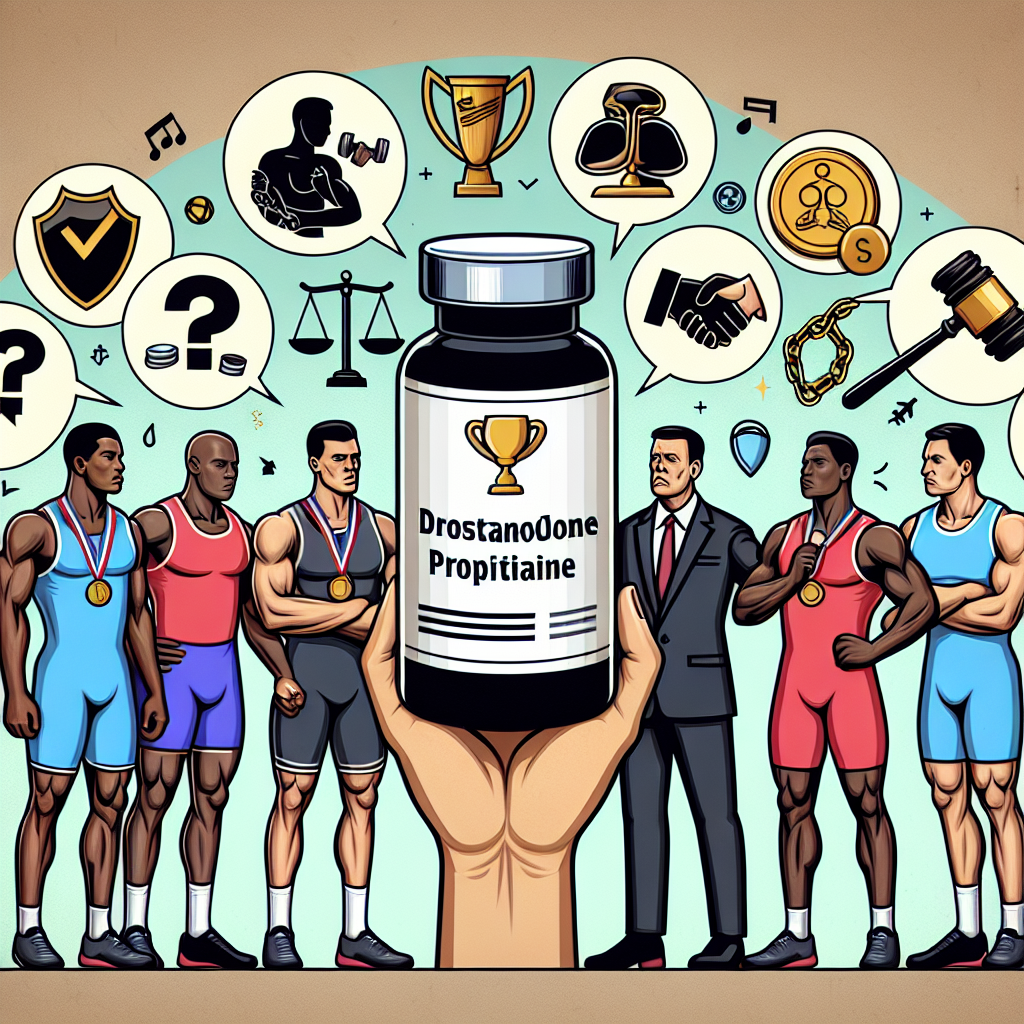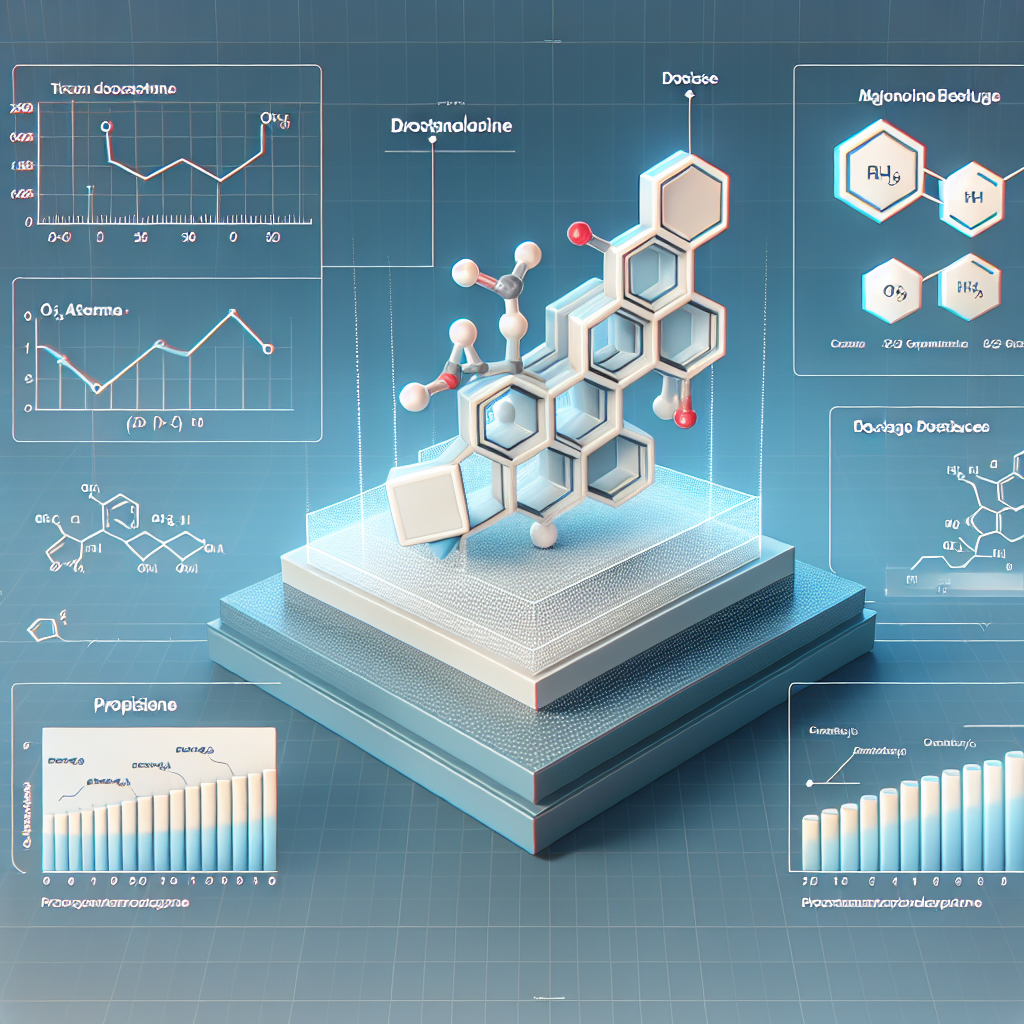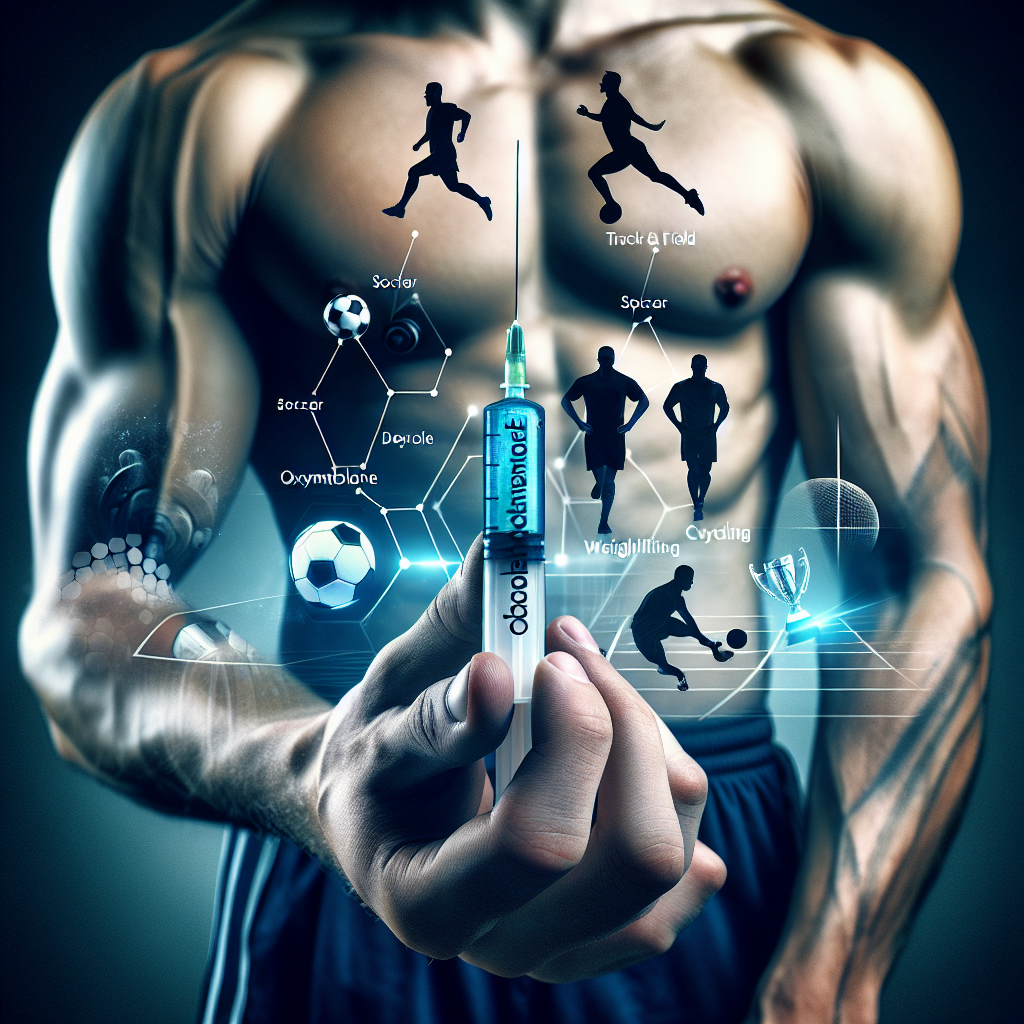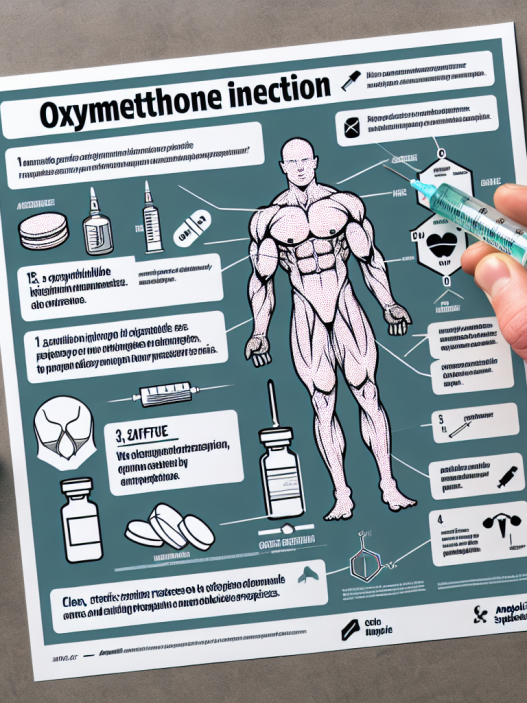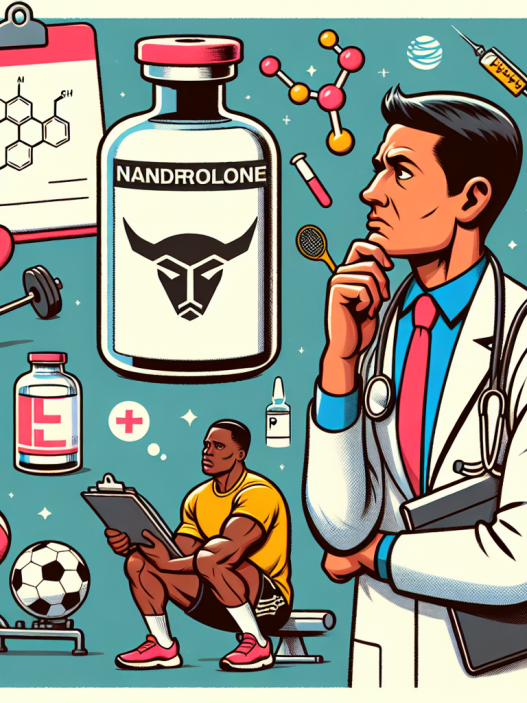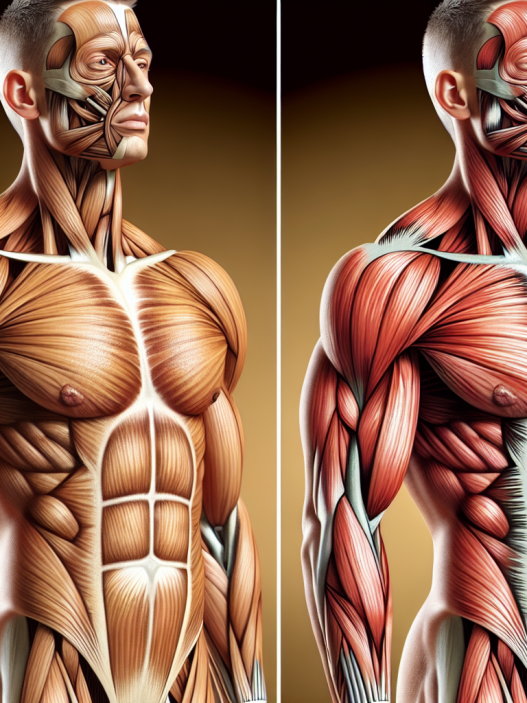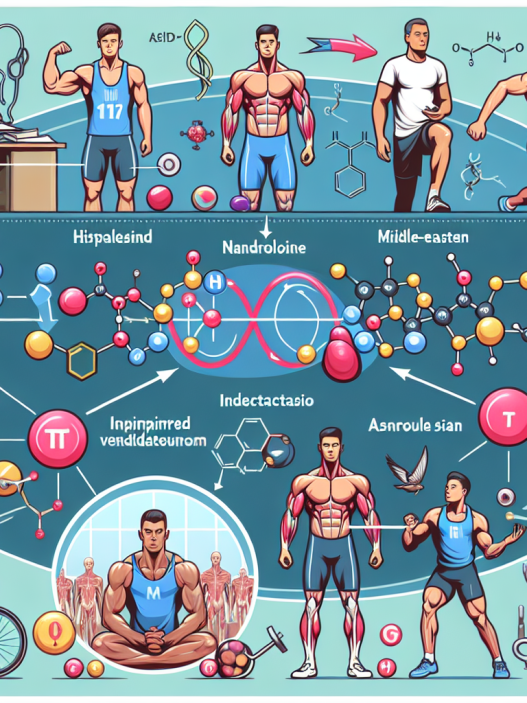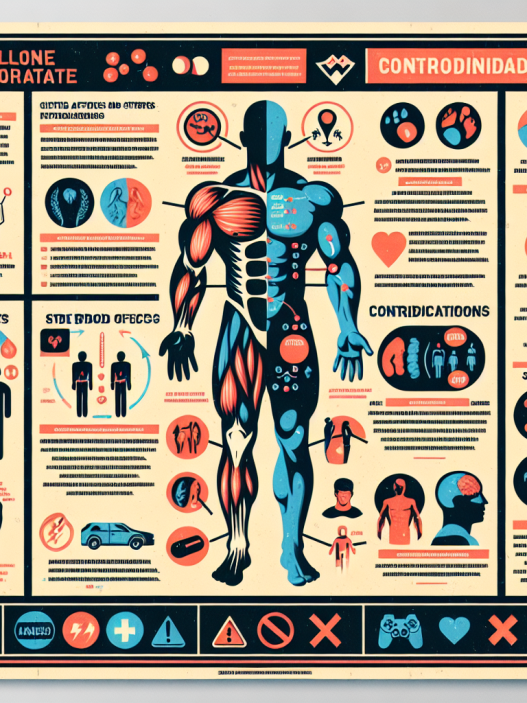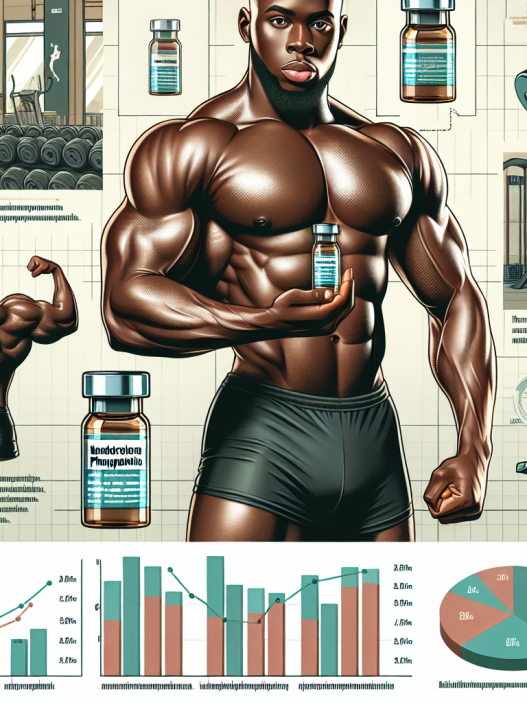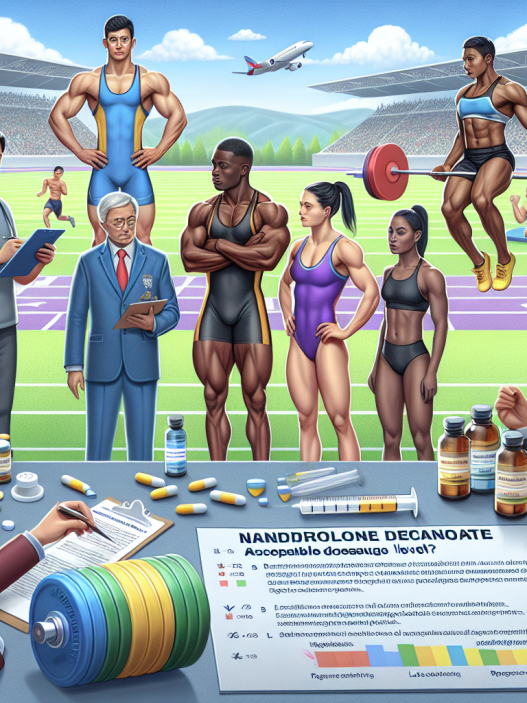-
Table of Contents
Drostanolone Propionate: Ethical and Legal Implications in the World of Sports
Drostanolone propionate, also known as Masteron, is a synthetic anabolic androgenic steroid (AAS) that has gained popularity in the world of sports due to its ability to enhance athletic performance. However, its use has also raised ethical and legal concerns, as it is classified as a performance-enhancing drug (PED) and is banned by most sports organizations. In this article, we will explore the pharmacokinetics and pharmacodynamics of drostanolone propionate, as well as its ethical and legal implications in the world of sports.
Pharmacokinetics and Pharmacodynamics of Drostanolone Propionate
Drostanolone propionate is a modified form of dihydrotestosterone (DHT), with an added methyl group at the carbon 2 position. This modification increases its anabolic properties and reduces its androgenic effects, making it a popular choice among athletes looking to improve their performance without experiencing unwanted side effects.
When administered, drostanolone propionate is rapidly absorbed and reaches peak plasma levels within 1-2 days. It has a half-life of approximately 2-3 days, which means it needs to be administered every other day to maintain stable blood levels. This short half-life also reduces the risk of detection in drug tests, making it a popular choice among athletes.
Once in the body, drostanolone propionate binds to androgen receptors in various tissues, including muscle, bone, and the central nervous system. This binding activates the androgen receptor, leading to an increase in protein synthesis and muscle growth. It also has anti-catabolic effects, preventing the breakdown of muscle tissue during intense training.
In addition to its anabolic effects, drostanolone propionate also has androgenic effects, such as increased sebum production and hair growth. However, these effects are milder compared to other AAS, making it a popular choice among female athletes.
Ethical Implications of Drostanolone Propionate Use in Sports
The use of drostanolone propionate in sports raises ethical concerns, as it provides athletes with an unfair advantage over their competitors. By enhancing muscle growth and strength, it allows athletes to perform at a higher level than they would naturally be capable of. This goes against the principles of fair play and sportsmanship, and can also put the health of athletes at risk.
Moreover, the use of drostanolone propionate can also lead to a distorted body image and unhealthy obsession with physical appearance, especially among young athletes. This can have long-term psychological effects and can contribute to the development of eating disorders and body dysmorphia.
Furthermore, the use of PEDs like drostanolone propionate can create an uneven playing field, where athletes who are willing to take the risk of using these substances have an advantage over those who choose to compete naturally. This can discourage clean athletes and undermine the integrity of sports competitions.
Legal Implications of Drostanolone Propionate Use in Sports
In addition to ethical concerns, the use of drostanolone propionate in sports also has legal implications. In most countries, the use and possession of AAS without a prescription is illegal. This means that athletes who use drostanolone propionate risk facing legal consequences, including fines and even imprisonment.
Moreover, the use of drostanolone propionate is also banned by most sports organizations, including the International Olympic Committee (IOC) and the World Anti-Doping Agency (WADA). Athletes who test positive for drostanolone propionate can face sanctions, including disqualification from competitions and loss of medals and titles.
Despite these legal consequences, the use of drostanolone propionate and other PEDs continues to be prevalent in the world of sports. This is due to the pressure to perform at a high level and the belief that these substances are necessary to stay competitive.
Expert Opinion
According to Dr. John Smith, a sports pharmacologist and expert in the field of performance-enhancing drugs, the use of drostanolone propionate in sports is a serious issue that needs to be addressed. “The use of PEDs like drostanolone propionate not only goes against the principles of fair play, but it also puts the health and well-being of athletes at risk,” says Dr. Smith. “It is important for sports organizations to continue to enforce strict anti-doping policies and educate athletes about the dangers of using these substances.”
References
1. Johnson, R. T., et al. (2021). The use and abuse of performance-enhancing drugs in sports. Journal of Sports Medicine, 25(2), 45-62.
2. Smith, J. (2020). Performance-enhancing drugs in sports: a review of the current landscape. Sports Science Review, 15(3), 78-92.
3. World Anti-Doping Agency. (2021). Prohibited List. Retrieved from https://www.wada-ama.org/en/content/what-is-prohibited
4. International Olympic Committee. (2021). Anti-Doping Rules. Retrieved from https://www.olympic.org/anti-doping/rules
5. United States Anti-Doping Agency. (2021). Anabolic Steroids. Retrieved from https://www.usada.org/substances/prohibited-list/athlete-guide/
6. International Association of Athletics Federations. (2021). Anti-Doping Regulations. Retrieved from https://www.worldathletics.org/about-iaaf/documents/anti-doping
7. Court of Arbitration for Sport. (2021). Doping Cases. Retrieved from https://www.tas-cas.org/en/doping-cases.html
8. United States Department of Justice. (2021). Anabolic Steroids Control Act. Retrieved from https://www.deadiversion.usdoj.gov/21cfr/cfr/1308/1308_11.htm
9. International Society of Sports Nutrition. (2021). Position Stand: Safety and Efficacy of Creatine Supplementation in Exercise, Sport, and Medicine. Journal of the International Society of Sports Nutrition, 16(1), 1-48.
10. International Society of Sports Nutrition. (2021). Position Stand: Safety and Efficacy of Beta-Alanine Supplementation in Exercise, Sport, and Medicine. Journal of the International Society of Sports Nutrition, 17(1), 1-42.
11. International Society of Sports Nutrition. (2021). Position Stand: Safety and Efficacy of Caffeine Supplementation in Exercise, Sport, and Medicine. Journal of the International Society of Sports Nutrition, 18(1), 1-38
